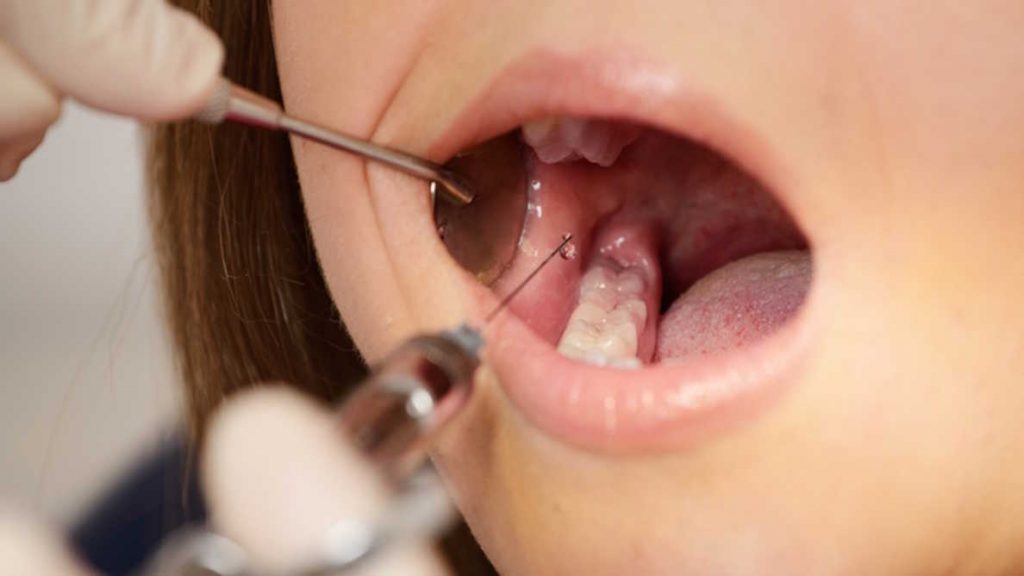Understanding Dental Anesthesia
When dentistry work must be carried out on a patient, a dental hygienist or dentist has to give the patient a dental anesthetic to eliminate pain.
These medications numb the areas that are going to be worked on so that they stay numb for around 2 hours following treatment. This allows the patient to stay awake and aware throughout the procedure but they can be pain-free and relaxed the whole time.
Is There A Difference Between Sedation Dentistry & Dental Anesthetics?
Sedatives and anesthetics for dentistry are used under different circumstances by a dentist. A sedative will be given so the patient can better manage their nerves and anxiety before they undergo dental treatment. Anesthetics, meanwhile, are used for eliminating discomfort and pain.
Dentists usually use Nitrous Oxide (or laughing gas) when sedating patients, either through an injection or as an orally taken tablet. Severely anxious patients are given their sedative before they are given their anesthetic injection.
Patients suffering from acute anxiety can go to a specialized sedation dentist who will help them to alleviate their fear so that they can overcome any apprehension about going to the dentist for treatment.
Benefiting From Local Anesthetics for Dentistry
A patient who has acute anxiety as well as a fear of going to the dentist will sometimes refuse anesthetics. If the dentist is able to explain the benefits of local anesthetics for dentistry, they can help patients to relax and experience less pain.
The benefits associated with having anesthesia:
- Having a dental anesthetic can allow a number of vital dental appointments to be merged into just one appointment where all the treatment can be carried out at once.
- The patient will experience a lot less pain when having their procedure.
- Anesthetics can be used along with sedatives so anxiety, pain and discomfort can be alleviated.
- Dental anesthetics which are administered today are safe and produce highly effective results.
Anesthetics & Potential Side Effects
Anesthetics are commonly used today when having dental procedures but before the dentist can administer anything, it’s important that they are well-informed about the patient’s medical history. Patients must tell their dentist about allergies they have, the medications they taken, and whether or not they’ve ever abused alcohol. Although side effects of anesthetics are rare, they include:
- Vomiting or nausea
- Swelling in the patient’s mouth
- Dizziness
What Are The Different Types Of Anesthetic For Dental Procedures?
Dentists can determine the best kind of anesthetic for each patient for their individual procedure. The decision depends on whether the treatment is invasive or minor as well as the patient’s medical history and personal preferences.
Local Anesthesia
Local anesthetics are usually used if patients require minor dental procedures. Usually, these anesthetics include prilocaine, lidocaine, articaine, mepivacaine or bupivacaine.
These anethestics will be administered with a needle as they are injected directly into the part of the patient’s mouth that will be treated. Once the anesthetic becomes active, that area becomes numb and the pain receptors stop working. This eliminates all pain and discomfort for several hours, allowing the dentist to carry out the procedure when the patient remains awake yet comfortable.
Some common treatments that are carried out under local anesthetics include:
- Cavity fillings
- Tooth extractions
- Root canal procedures
- Placing dental crowns
- Root scaling and planing
General Anesthetic
General anesthetics involve loss of consciousness for the patient before they undergo their procedure. Medically speaking, general anesthetics induce a coma, so the patient isn’t asleep but they also aren’t response and experience no pain. These anesthetics will either be given intravenously or be inhaled.
There is a difference between IV sedation and general anesthetics in that patients can respond and breathe on their own when having IV sedation but not when having a general anesthetic.
General anesthetics are used in a hospital if a patient requires an invasive form of oral surgery such as a:
- Bone graft
- Tooth extraction
- Surgery to treat oral cancer
- Surgery to treat sleep apnea
- Surgery to correct the jaw
- Surgery for a cleft palate or cleft lip
- Cosmetic dental procedure

